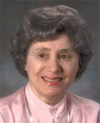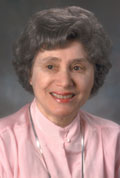Archived: Opportunity to Comment on Proposed Changes to Financial Conflict of Interest Regulations
June 3, 2010
Continue Reading
Archived: Blogging for One Year!
April 14, 2010
Continue Reading
Archived: Save the Date: Commemorating the Life and Accomplishments of Ruth Kirschstein
March 31, 2010
Continue Reading
Archived: First Human Embryonic Stem Cell Lines Approved Under New Guidelines Now Available
December 2, 2009
Continue Reading
Archived: Using Social Media
November 12, 2009
Continue Reading
Archived: 2009 Chemistry Nobel Prize Recognizes the Determination of the Ribosome’s Three-Dimensional Structure
October 7, 2009
Continue Reading
Archived: Remembering Ruth Kirschstein
October 7, 2009
Continue Reading
Archived: Nobel Prize to Long-Time NIGMS Grantees
October 5, 2009
Continue Reading
Archived: Nation’s Top Science Honor Goes to Francis Collins, JoAnne Stubbe, Others
September 18, 2009
Continue Reading
Archived: Happy Fifth Birthday, MIDAS
September 8, 2009
Continue Reading

 Since I first wrote about the death of former NIGMS director Dr. Ruth Kirschstein, plans have progressed for a daylong commemorative event on Monday, May 17, at NIH. The program will include several remembrances as well as scientific presentations and posters by recipients of the Ruth L. Kirschstein National Research Service Award.
I will update you when the final program is available.
Since I first wrote about the death of former NIGMS director Dr. Ruth Kirschstein, plans have progressed for a daylong commemorative event on Monday, May 17, at NIH. The program will include several remembrances as well as scientific presentations and posters by recipients of the Ruth L. Kirschstein National Research Service Award.
I will update you when the final program is available. We were all very sad to learn of the death of Ruth Kirschstein, M.D., last evening. She will be deeply missed here at NIGMS, NIH, and beyond.
Dr. Kirschstein was an iconic figure at NIH and in the scientific community. She was the long-time director of NIGMS, serving from 1974 to 1993, and was the first female director of an NIH institute. She also served as acting director of NIH, deputy director of NIH, and in other key positions.
Dr. Kirschstein truly represented the best of NIH—public service, wisdom, and deep knowledge and analysis of important problems. She was so profoundly modest that Congress had to surprise her when they acknowledged her contributions and commitment to research training with the naming of the Ruth L. Kirschstein National Research Service Awards.
I am sure much more will be said and written about her in the future, and we will share this with you in the comments section. I encourage you to post your own thoughts about her as well.
We were all very sad to learn of the death of Ruth Kirschstein, M.D., last evening. She will be deeply missed here at NIGMS, NIH, and beyond.
Dr. Kirschstein was an iconic figure at NIH and in the scientific community. She was the long-time director of NIGMS, serving from 1974 to 1993, and was the first female director of an NIH institute. She also served as acting director of NIH, deputy director of NIH, and in other key positions.
Dr. Kirschstein truly represented the best of NIH—public service, wisdom, and deep knowledge and analysis of important problems. She was so profoundly modest that Congress had to surprise her when they acknowledged her contributions and commitment to research training with the naming of the Ruth L. Kirschstein National Research Service Awards.
I am sure much more will be said and written about her in the future, and we will share this with you in the comments section. I encourage you to post your own thoughts about her as well.